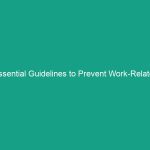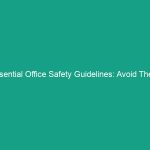Introduction
Good morning team! Today, we are going to talk about an important health and Safety topic that affects us all, especially those of us who work outdoors: ticks. Understanding ticks and how to avoid encounters with them is crucial for maintaining our health and Safety while on the job. With tick-borne illnesses on the rise, it’s vital that we equip ourselves with the knowledge to prevent these risky encounters.
Understanding Ticks Guidelines
Ticks are small arachnids that feed on the blood of mammals, birds, reptiles, and amphibians. While they may be tiny, they pose a significant health risk to humans, often transmitting diseases such as Lyme disease, Rocky Mountain spotted fever, and anaplasmosis. These diseases can lead to severe health complications if not treated promptly.
It’s a common misconception that ticks are only found in heavily wooded areas or rural settings. In reality, ticks can thrive in any grassy or bushy area, including parks, gardens, and even urban environments. It’s essential to recognize that any outdoor work or activity could expose you to ticks, making it necessary to follow Safety Guidelines rigorously.
Key Hazards, Risks, and Safety Considerations
When we think about Workplace Safety, we often consider slips, trips, and falls, but the dangers posed by ticks are just as real. Here are some key Hazards and risks associated with ticks:
- Tick Bites: A tick bite may go unnoticed initially, allowing time for the tick to transmit diseases.
- Tick-Borne Diseases: Diseases such as Lyme disease can lead to serious health issues, including long-term neurological problems if left untreated.
- Increased Exposure: Working in areas with dense vegetation or during peak tick season (spring and summer) increases the risk of encounters.
Ignoring these risks can lead to severe health consequences for individuals and potential liability issues for our organization. It’s crucial to be proactive in tick Prevention to safeguard our health and productivity.
Best Practices, Procedures, & Actionable Advice
To minimize the risk of tick encounters, follow these Best Practices:
1. Wear Appropriate Clothing
When working outdoors, dress in light-colored clothing, as this makes it easier to spot ticks. Long sleeves and pants should be worn, and pants should be tucked into socks to create a barrier against ticks.
2. Use Tick Repellents
Apply insect repellent containing at least 20% DEET on exposed skin and clothing. Follow the instructions on the product label for Safe Usage. You can also treat clothing with permethrin for added protection.
3. Conduct Regular Tick Checks
After spending time outdoors, conduct a thorough tick check on yourself and your coworkers. Pay close attention to areas where ticks are likely to attach, such as:
- Behind the ears
- Under the arms
- On the scalp
- Under the collar
- Between the legs
Perform this check as soon as possible after returning indoors.
4. Shower and Change Clothes
As soon as you return from outdoor work, shower and change into clean clothes. This can help wash off any ticks that may be on your skin or clothing and reduce the risk of bites.
5. Dispose of Ticks Properly
If you find a tick on yourself or a coworker, remove it safely using fine-tipped tweezers. Grasp the tick as close to the skin’s surface as possible and pull upward with steady, even pressure. Clean the bite area and your hands with rubbing alcohol or soap and water. Do not crush the tick with your fingers!
Regulations, Standards, and Compliance
It’s important to be aware of and comply with relevant safety Regulations regarding tick safety. Organizations such as OSHA and the CDC provide guidelines for preventing tick bites in work environments. By adhering to these Standards, we not only protect ourselves but also ensure a safer workplace for everyone. Compliance with these regulations also mitigates the risk of legal liabilities for our organization.
Employee Engagement & Discussion
Let’s take a moment to think about our experiences. Have you ever encountered a tick while working? What Precautions have you taken in the past? Understanding our collective experiences can help us develop better strategies for tick prevention. Feel free to share your thoughts and any additional tips you might have.
Conclusion & Key Takeaways
In summary, understanding and following the guidelines for tick safety is essential for protecting ourselves and our colleagues from tick-borne diseases. Remember to wear appropriate clothing, use repellents, conduct regular checks, and shower after outdoor work. By implementing these practices, we can significantly reduce our risk of tick encounters.
Thank you for your attention and commitment to safety! Let’s prioritize our health and create a safer work Environment together.


